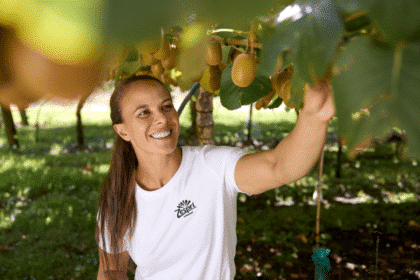A Vonage study found that only 45 percent of global consumers are “very satisfied” with the way companies connect with them, significantly lower than the 60 percent satisfaction rate they have with communications from their family and friends.
In APAC, 56 percent ware “very satisfied” with friends and family communications vs 45 percent for business/service provider communications.
The cloud communications provider said brands can increase their rates of satisfaction using technology such as omnichannel communications channels, artificial intelligence (AI)-driven capabilities, and more
Vonage interviewed nearly 5,000 consumers from 11 countries for its 11th Global Customer Engagement Report.
The survey included respondents from six major economies in Asia Pacific (APAC), namely Australia, China, India, Indonesia, Japan and South Korea.
APAC consumers preferred using mobile phone calls (54 percent), messaging via non-SMS apps like WhatsApp and Facebook Messenger (48 percent), and commenting on social media posts (44 percent) for contacting friends and family on a daily basis.
Customers contact businesses less on a daily basis and on different platforms. In APAC, mobile phone calls (40 percent) are the most common method used by customers to communicate with businesses followed by phone calls via messaging apps (32 percent), messaging via non-SMS apps (31 percent), emails (31 percent) and commenting on social media posts (30 percent).
This disparity suggests that businesses are not providing consumers with the same, familiar experience they are used to in their personal lives when it comes to communications technology. In order to do that, businesses need to drive omnichannel customer engagement forward (voice calls, video, chat, messaging apps, and more) and embrace emerging technologies like AI, to eliminate common customer frustrations and technology gaps.
“The ubiquity of mobile phones delivers the kind of vehicle to businesses that allow them to speak to and engage with their customers directly — right from the palms of their hands. Yet, this research reveals that many businesses are still not using the communications channels made available by today’s technology to their full potential and are missing out on opportunities to make real connections with customers and drive customer engagement,” said Joy Corso, Chief Marketing Officer for Vonage.
“This is where AI tools can help and surface as underused technology.”
AI tools like virtual assistants, for instance, can address common requests and eliminate long wait times for customers. Virtual assistants can also provide the initial triage to route customers to the right person — which is helpful during peak or seasonal periods.
Another tool is conversational commerce, which uses AI to engage customers in-channel. Companies can use it to add information, automation, and self-service to conversations. For example, companies can provide front-end FAQs, authenticate users, and authorize payments.
“In this age of digital transformation, as more businesses work to improve and simplify the customer journey, AI-powered technologies such as virtual assistants, programmable voice, chatbots, and conversational commerce are letting customers take control of their preferred communication channels,” said Dan Miller, Lead Analyst and Founder, Opus Research. “With this year’s instalment of the Global Customer Engagement Report, Vonage is shining a light on the importance of personalised, real-time engagement as the key to driving enduring brand loyalty.”
Common Frustrations and the Way Forward
The data reveals several top customer frustrations in making meaningful and effective connections with brands in APAC, including:
- Long wait times to speak to a customer support agent (54 percent)
- Contacting customer support multiple times to resolve an issue (54 percent)
- Customer support’s inability to answer a question as the right person is unavailable (52 percent)
- Describing an issue to multiple agents and being transferred multiple times (50 percent)
- No avenues for speaking to customer service via voice or phone (50 percent)
While these frustrations are not new, they remain top of mind for consumers, and businesses need to remedy this before it negatively impacts customer loyalty.
Brands will need to act quickly, as nearly half of those surveyed noted they are likely to leave or switch businesses after just one or two frustrating experiences.
Brands can quickly remedy some of these issues through the help of AI capabilities: automation and personalization using virtual assistants, conversational commerce, voicebots, interactive voice response systems (IVRs) or automated business phone systems, and more.
Purchase Channel Preferences
Surprisingly, globally, the respondents indicated that physical in-store remains the most-preferred purchase channel (45 percent), followed by ecommerce (39 percent), phone calls (38 percent), and email (36 percent). While phone calls and email are widely preferred channels across all stages of the purchase process, website chat is preferred mainly for asking questions while shopping and getting answers to problems during a purchase. This isn’t surprising as today’s consumer needs and demands real-time, contextual, and seamless support at every step of their customer journey. This represents another area of opportunity for businesses to address to ensure exceptional customer experiences.
In APAC, consumers preferred phone calls (54 percent), email (45 percent), and in-store visits (40 percent). In contrast, texting (34 percent) and video chats (19 percent) were least preferred channels. When it comes to research, APAC consumers’ most preferred channels include search engines (58 percent), friends/family (44 percent), the company’s website (44 percent), and third-party websites (41 percent). In contrast, only 32 percent would visit retail stores while 24 percent would call the company directly while doing research.
Added Corso, “The pandemic made the call for digital transformation louder than ever before. Whether it’s messaging, chat, video, or AI-powered conversational commerce, consumers expect to connect with brands in the same way they connect in their personal lives — through whatever channel they are in and where they are most comfortable. There is a tremendous opportunity for businesses here. Quite simply, businesses should be communicating more like family and friends. That is the experience that will drive customer engagement and keep customers coming back.”
Read the full Vonage Global Customer Engagement Report 2022 for more insights and take an interactive quiz on the top customer experience frustrations.








